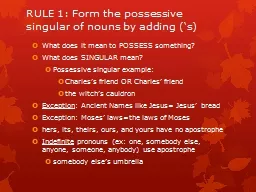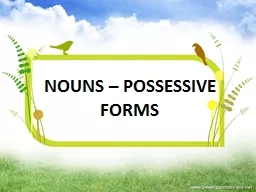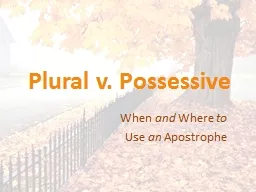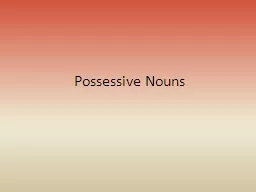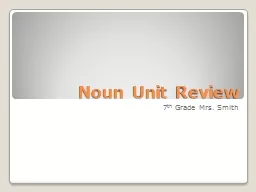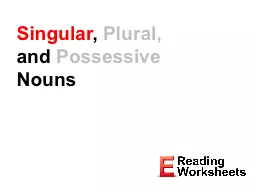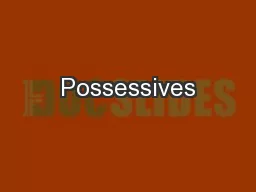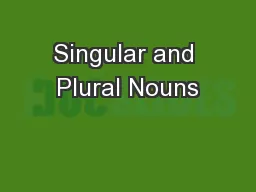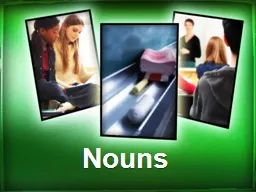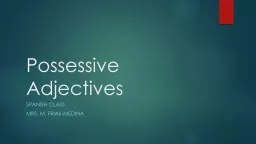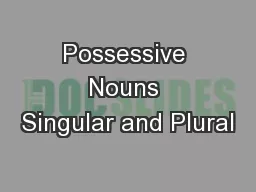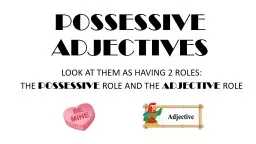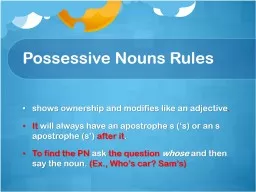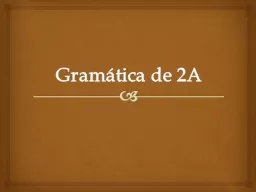PPT-RULE 1: Form the possessive singular of nouns by adding (
Author : kittie-lecroy | Published Date : 2017-12-29
What does it mean to POSSESS something What does SINGULAR mean Possessive singular example Charless friend OR Charles friend t he witchs cauldron Exception Ancient
Presentation Embed Code
Download Presentation
Download Presentation The PPT/PDF document "RULE 1: Form the possessive singular of ..." is the property of its rightful owner. Permission is granted to download and print the materials on this website for personal, non-commercial use only, and to display it on your personal computer provided you do not modify the materials and that you retain all copyright notices contained in the materials. By downloading content from our website, you accept the terms of this agreement.
RULE 1: Form the possessive singular of nouns by adding (: Transcript
Download Rules Of Document
"RULE 1: Form the possessive singular of nouns by adding ("The content belongs to its owner. You may download and print it for personal use, without modification, and keep all copyright notices. By downloading, you agree to these terms.
Related Documents

